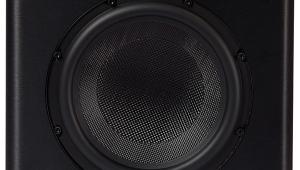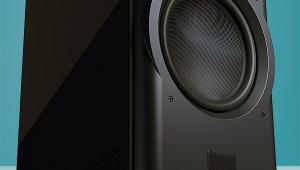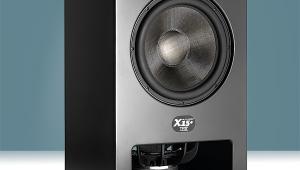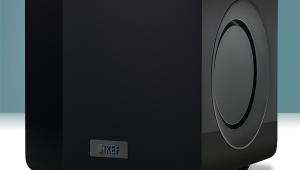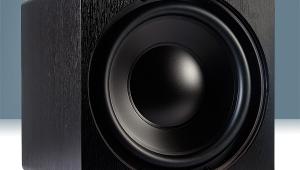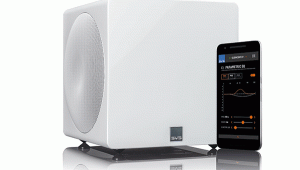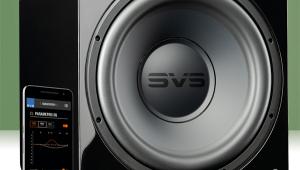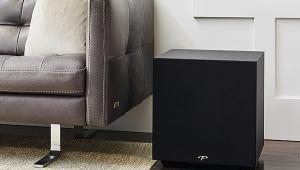Arendal Sound 1961 Subwoofer 1S review
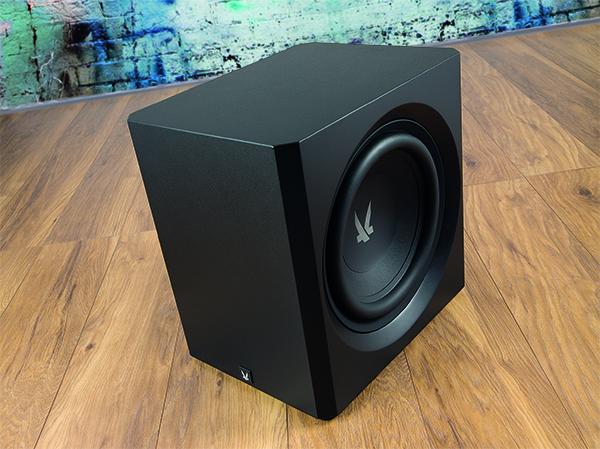
 Norwegian brand Arendal has launched a new product range that sits below its debut 1723 Series. Dubbed 1961 (the year Norway's Tromøy to Arendal bridge was built, apparently), it features passive speakers and two subwoofers. The smaller model, the 1961 Subwoofer 1S,
is auditioned here. It flaunts a tempting price tag of €800.
Norwegian brand Arendal has launched a new product range that sits below its debut 1723 Series. Dubbed 1961 (the year Norway's Tromøy to Arendal bridge was built, apparently), it features passive speakers and two subwoofers. The smaller model, the 1961 Subwoofer 1S,
is auditioned here. It flaunts a tempting price tag of €800.
This bass-maker has a very cinema-centric design, which is to say it's unglamorous, particularly in its black finish (there's also a white option). It measures roughly 40cm in height and depth, but narrows to around 30cm wide. At 20kg, it's by no means lightweight, but neither is it much of a chore to shift about when positioning.
On its right side, you'll find Arendal's newest invention, a 12.2in long fibre pulp woofer (which requires 'less excursion and power to achieve the same SPL levels as a standard 12in', says Arendal) with sizeable isoprene rubber surround. The brand also boasts that extensive finite element analysis (FEA) and Klippel laser modelling have been used throughout the design of the woofer, voice coil and motor assembly.
As with Arendal's step-up subs, the cabinet is constructed from HDF (High-Density Fibreboard) rather than the more common MDF. The sub's corners each get a little angular cut, a tiny touch of style to go with the logo on the driver, cabinet and even the underside of the puck feet. But I'm not sold on the notion that this will 'fit any living room décor'. It's functional, rather than fashionable. The multi-layer paint job has a textured matte finish.
The sub's back panel is unusual, in that it offers no crossover or gain knobs, or phase switch. All these options (and more) are instead governed via a 1.8in hi-res colour LCD display, using a dial to cycle through menus and Enter and Back keys to navigate. This is all part of Arendal's two-years-in-development Avalanche 550IQ internal amplifier, which in addition to delivering a claimed 550W (RMS) of grunt, performs a multitude of functions, from managing power supplies to implementing EQ filters. And much of this brain power is opened up to the end user.
Use that LCD menu and you can set the frequency and slope of the sub's low-pass filter, tweak variable phase or go for a 180-degree signal inversion; adjust the time-span of its auto standby feature (from five to 60 minutes); select the sensitivity of its wake-up sensor; and implement a subsonic filter (to roll off very low frequencies up to 31Hz) if you wish.
Also in terms of performance preferences, Avalanche 550IQ incorporates two EQ presets – EQ1 aims for a natural roll off to below 20Hz, while EQ2 begins to attenuate more aggressively from 40Hz, and is recommended by Arendal for smaller environments and music listening.
And then there's the three-band parametric EQ, giving you control of gain and Q factor at 1Hz intervals; the idea being that you can use this to tame (to a degree) room-borne bass issues. This will be of interest to tweakers with room analysis software (or a very good ear) and, altogether, the Subwoofer 1S has extensive user control for a sub in this price range.
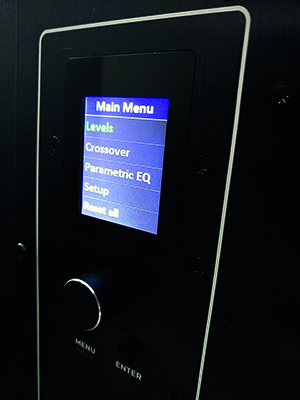
Arendal Sound 1961 Subwoofer 1S performance
While the sub has a basic styling, there's nothing basic about its performance. That sizeable driver and potent-for-the-price amp unit combine to conjure largescale, deep and fluid bass notes.
Kicking off with the low-end acrobatics of the drum 'n' bass tune Dutty by DJ Brockie and Ed Solo (Tidal), the 1S tracks the synthetic throbs with considerable aplomb, sounding snappy without being dry, and giving the music a slam and drive it deserves.
Mission Impossible: Fallout's climax (4K Blu-ray), with Ethan Hunt showing off his helicopter skills, provides real LFE meat to chew on. The low, near continuous throbs of the chopper engines are tangible, and the subwoofer's presence adds an edge to the sound of whirring blades and the brass honks of Lorne Balfour's score. When Hunt's helicopter hits the mountain and tumbles down the slope, the Arendal driver pulses in delight, rollicking in its rubber surround and showing an ability to hit deep and stay loud.
It's happy with less aggressive moments, too. Hunt and Walker's clifftop scrap is enlivened by the sharp, tight punches the sub gives to every punch and body slam. Later in the scene, the subtle effect of wind surging through the Kashmir valley becomes more apparent.
Switching between the two EQ modes yields a change in demeanour, although the effect isn't as pronounced as you might think (in my room, at least). I eventually plumped for the higher output EQ1 for all listening.
What this well-priced woofer won't do is completely overwhelm you in subsonic mayhem. For larger setups and bass obsessives, the vented Subwoofer 1V model, which claims to hit 16Hz, might be a better fit – as long as its bigger cabinet and €200 price hike can be accommodated.
A more obvious criticism concerns usability. Ideally, the parametric EQ and other features would be accessed via a smartphone app. The sub's dial/button arrangement is simplistic and intuitive, but making adjustments is long-winded, and the back of the woofer might not always be easily accessible depending on your installation.
Even without these skills, however, this is a high-performing woofer at a solid price. Add in the extra scope for fine-tuning, and it's hard to think of it as anything other than a bargain.
HCC Verdict: 5/5
Arendal Sound 1961 Subwoofer 1S
Price: €800
arendalsound.eu
We say: A great-value, powerful new addition to Arendal's lineup with a control system that, while not the slickest around, introduces fine-tuning potential.
Specification
Drive units: 1 x 12.2in woofer
Enclosure: Sealed Frequency response (claimed): 18Hz-270Hz
Onboard power (claimed): 550W Avalanche 550IQ amp
Remote control: No
Dimensions: 427(h) x 315(w) x 415(d)mm
Weight: 20kg
Features: Low-level stereo phono input; LFE phono input; low-level stereo phono output; LCD display menu control; low-pass filter control with adjustable slopes; subsonic filter control with adjustable slopes; 2 x EQ modes and three-band parametric EQ with Q factor control; variable phase and signal invert; adjustable auto wake and on-time setting; 12V trigger
 |
Home Cinema Choice #351 is on sale now, featuring: Samsung S95D flagship OLED TV; Ascendo loudspeakers; Pioneer VSA-LX805 AV receiver; UST projector roundup; 2024’s summer movies; Conan 4K; and more
|






